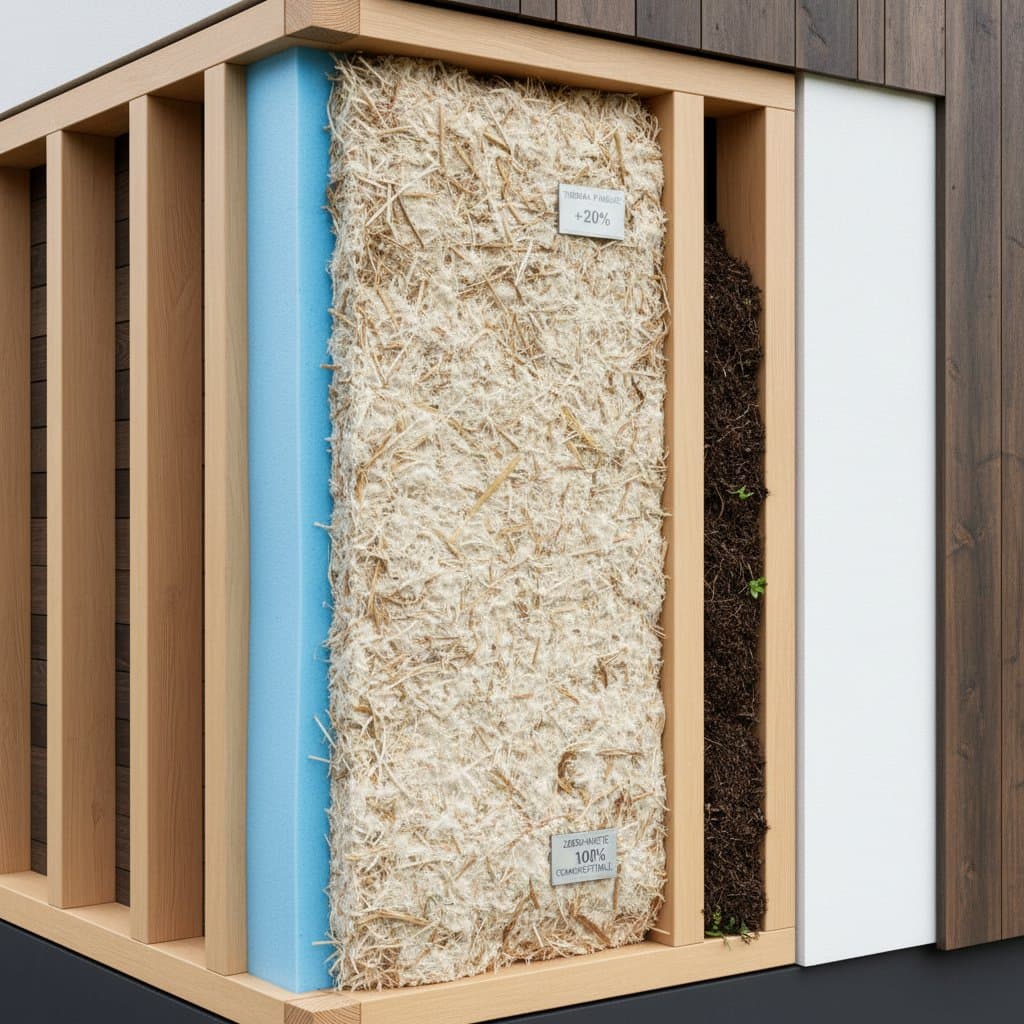Key Points
- All-electric homes gain popularity in remodeling for enhanced safety, superior efficiency, and strong sustainability benefits.
- Gas-free upgrades lower emissions, enhance indoor air quality, and facilitate integration with renewable energy sources.
- Technologies such as induction cooking, heat pumps, and electric water systems surpass gas alternatives in performance and user comfort.
- Available incentives and regulatory changes speed up the adoption of all-electric lifestyles.
- Professional guidance ensures seamless implementation, effective cost management, and enduring environmental advantages.
The Growing Appeal of Gas-Free Homes
As a green building professional, I have observed numerous homeowners facing the challenge of updating their properties while reducing environmental impact. Many believe that sustainable choices require compromises in comfort or convenience, yet reality proves otherwise. Imagine entering a kitchen illuminated by the consistent light of induction burners, with air untainted by combustion byproducts and a subtle hum from an efficient heat pump sustaining ideal indoor temperatures. This scenario represents the evolving essence of eco-friendly remodeling.
In areas experiencing humid summers and cold winters, residents replace gas appliances with sophisticated electric options that deliver cleaner, quieter, and more precise operation. Motivations range from municipal gas restrictions and escalating energy expenses to health priorities. This trend redefines household sustainability in practical terms.
The Problem Fueling the Shift
Conventional gas systems generate substantial household emissions, including carbon releases and indoor contaminants. Research indicates that gas stoves emit nitrogen dioxide and carbon monoxide at concentrations exceeding outdoor air quality limits. Households with members sensitive to respiratory issues face heightened risks, often unaware that routine cooking impairs air purity.
From extensive field experience, I recognize the financial pressures of gas reliance. Volatile fuel costs complicate budgeting, and deteriorating gas lines risk methane leaks, a powerful greenhouse gas. In locales with existing air quality issues, abandoning gas emerges as an essential step for improved health.
The Opportunity Behind Electrification
Rising interest in electrification aligns with heightened environmental consciousness and advanced technology availability. Contemporary electric appliances exceed expectations, providing premium functionality at reduced long-term expenses. Consider these examples:
- Induction cooktops utilize magnetic fields to heat cookware directly, minimizing energy loss while enabling rapid and secure preparation.
- Electric heat pumps transfer heat into or out of a residence, combining heating and cooling capabilities in a single unit.
- Electric water heaters, particularly heat pump varieties, reduce water heating energy consumption by as much as 60 percent.
These innovations foster a cycle of enhanced efficiency. Homeowners integrate them with solar arrays or battery storage to approach zero-emission operations. As a green building specialist, I advise coordinating these installations for optimal results over isolated changes.
Expert Tips to Boost Your Home's Eco-Efficiency
1. Begin with a Home Energy Audit
Engage a certified auditor to pinpoint energy expenditure patterns and potential savings from electric conversions. This assessment also evaluates if your electrical panel supports increased demands. Upgrading from a 100-amp to a 200-amp service typically costs between $1,500 and $3,000, yet it enables adoption of cutting-edge technologies.
2. Phase Your Upgrades Strategically
Implement changes incrementally to manage disruption. Prioritize high-impact areas:
- Cooking: Select an induction cooktop or range; numerous models connect to existing outlets for straightforward installation.
- Water Heating: Opt for a heat pump water heater to achieve significant energy reductions.
- Space Conditioning: Substitute outdated furnaces or air conditioners with electric heat pumps offering dual heating and cooling.
- Vehicle Charging: Incorporate an EV charging outlet during circuit enhancements.
3. Focus on Insulation and Air Sealing
Electrification performs optimally in well-insulated structures. View insulation as a barrier against thermal escape. Enhancing attic and wall insulation to appropriate R-values can decrease heating and cooling requirements by 20 to 30 percent, thereby lowering the scale and expense of electric installations.
4. Choose Safe, Non-Toxic Materials
During renovations, select low-VOC paints, cabinetry free of formaldehyde, and wiring insulation avoiding PVC. Electrification projects often require accessing walls or ceilings, offering an ideal opportunity to incorporate materials that support health and sustainability objectives.
5. Integrate Smart Controls
Combine electric systems with programmable thermostats, motion detectors, and mobile app interfaces. These tools enable monitoring of current energy usage, adjustment of comfort levels, and identification of further efficiencies.
Cost and Return Considerations
Upfront investments concern many, but electrification yields favorable economics over time. Induction cooktops cost $800 to $2,000, and efficient heat pumps begin at about $4,000 including installation. These choices frequently reduce yearly utility expenses by 20 to 40 percent relative to gas systems. Paired with regional rebates or national incentives, return on investment occurs within five years.
Maintenance expenses decrease due to simpler designs without combustion elements. This approach provides predictable energy planning and shields against gas price swings. As Maria Torres of EcoHeat Solutions notes, “Every all-electric remodel we complete leaves clients surprised at how quiet, clean, and affordable their homes become.”
The Health and Environmental Upside
The environmental rationale for gas-free residences proves compelling. A complete electric transition averts several tons of annual carbon emissions per household. Health gains manifest quickly; studies link gas stove exposure to elevated asthma risks in children from indoor pollutants. Adopting induction or electric cooking removes these combustion residues immediately.
Clients often describe fresher air shortly after conversion. Kitchens remain cooler during use, and cleanup simplifies on smooth induction surfaces free of residue buildup. Electrification elevates energy dynamics alongside everyday comfort and well-being.
Common Missteps to Avoid
- Skipping electrical upgrades: Overburdened circuits pose fire risks; involve a licensed electrician for high-power additions.
- Ignoring ventilation: Electric kitchens require adequate airflow to control moisture and aromas.
- Rushing into installation: Align schedules with broader remodels to cut expenses and interruptions.
- Overlooking local incentives: Regions provide rebates and financing options for electric shifts.
Thorough planning avoids expensive corrections and ensures adherence to updating codes.
Matching Modern Design with Eco Goals
Gas-free living need not appear utilitarian. Designers highlight the refined aesthetics of induction cooktops and unobtrusive heat pump vents. Quieter systems enhance open floor plans, and absent gas piping allows greater layout versatility. This enables spaces that blend style with ecological responsibility.
Integrating electrification with renewables like rooftop solar or community programs advances net-zero potential. Even without immediate solar installation, future-proof designs simplify subsequent expansions.
Steps to Achieve Gas-Free Living
Electrifying a home demands deliberate effort, yet ranks among the most fulfilling green initiatives. Outline your goals, develop a staged timeline, and engage qualified specialists in sustainable installations. Platforms like ours link you with reliable local pros for assessments, system designs, and incentive applications.
Each step advances cleaner air, reduced costs, and enhanced durability. Operating fully on electricity, especially renewables, frees you from fossil fuel dependence and bolsters community health. From professional insights, the fulfillment of gas-free existence transcends data; it crafts a haven aligned with nature, ensuring lasting comfort.










